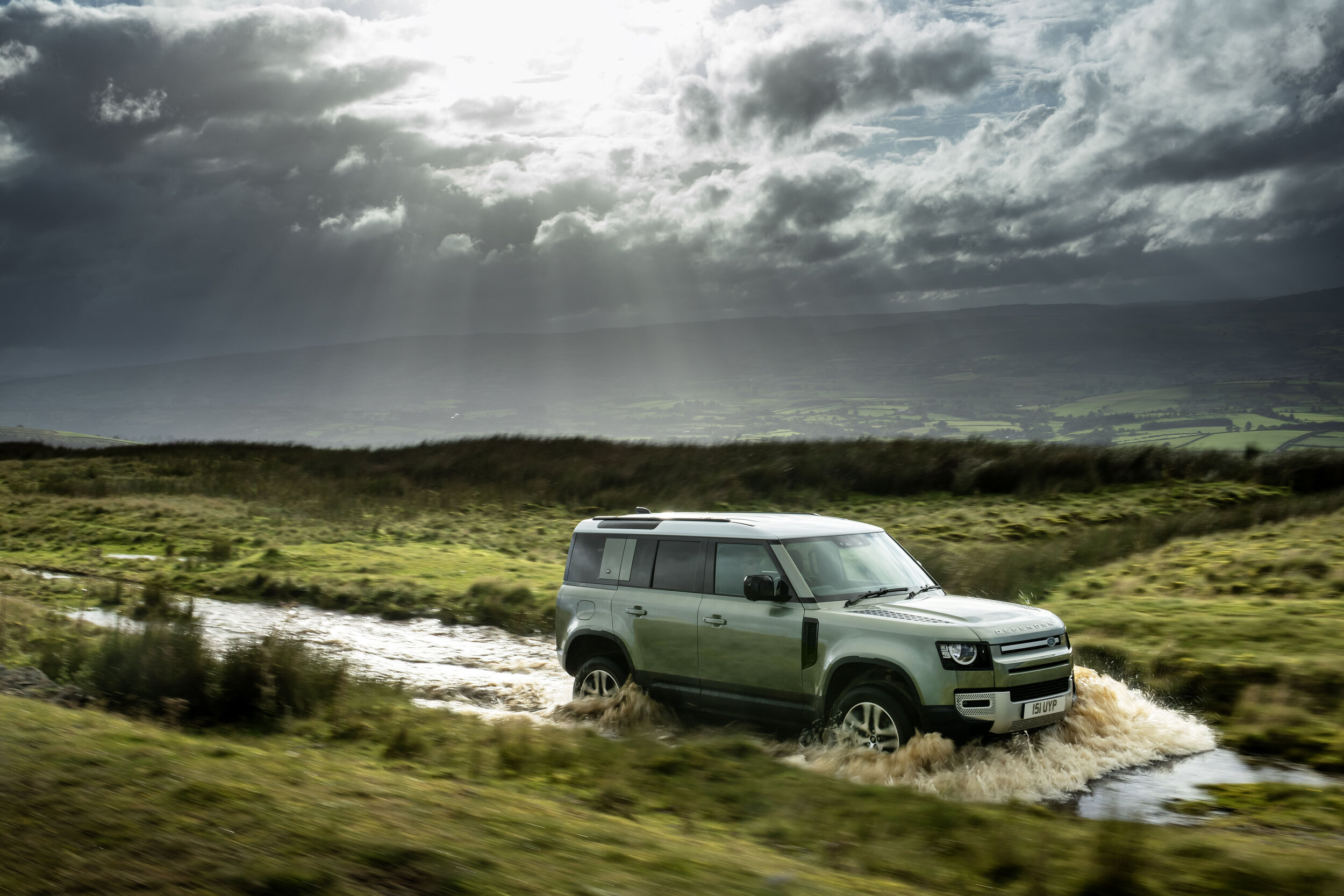Defender’s fours hit for six?
/They knew the plug-in hybrid petrol drivetrain was coming - the shock news for Land Rover’s distributor in respect to the Defender is hearing the four-cylinder diesels that launched here less than two months are set to be retired soon.
MORE information about the plug-in hybrid powertrain for the Land Rover Defender has come out, along with shock news – for the local distributor - that the four-cylinder diesels driving the model at present seem for the chop.
In expressing thought about both, Jaguar Land Rover New Zealand’s top man says while the P400e (above), which blends 44km of pure-electric range with punchy 300kW petrol-fired performance, looks tasty, so much will come to price.
As for the apparent determination to axe the diesels that were front and centre at the national media event for Defender, staged just seven weeks ago?
Well, that’s come as a shock to general manager Steve Kenchington and he’s been eager to get more information from JLR in the United Kingdom, which appeared to indicate this change in an overnight global release.
If that decision is valid, it’s not clear how much longer this market will be served by the D200 and D240 units that contain in all the launch derivatives.
What is known is that a six-cylinder diesel engine will be introduced in March of 2021. The national franchise already knew that this powerplant would arrive in top line D300 format. It’s the news, broken last night, of less powerful D200 and D250 variants of this unit that has come out of left field. Supposedly, these usurp the D200 four and D240.
Kenchington says there was no indication, when the car hit the market in July, that the four-cylinder option was set to disappear. As of today, he’s still not sure it will. Certainly, the reports have come as a complete surprise.
“It’s a real bombshell. I’m scratching my head on it to be honest. We actually haven’t had any formal notification that the four-cylinders are off the table for us.”
He thinks it all comes back to JLR’s focus on economies of scale and achieving less complexity.
Defender has been selling brilliantly since release – demand is actually ahead of expectation and the likelihood is at least 350 units being ordered by next March, the end of the local arm’s financial year and just nine months away, when 300 were forecast for the entire calendar year.
He doesn’t think knowledge now that an under-bonnet change is going to diminish enthusiasm for the current engines.
“If anything, it could be quite the contrary.”
Meantime, the idea of taking a PHEV alongside the current sole petrol choice, a 298kW three-litre six-cylinder (P400) that has 48-volt mild hybrid electrification.
As expected, the drivetrain is from the Range Rover Sport PHEV – so a 2.0-litre turbocharged petrol engine mated to an electric motor and a lithium-ion battery. The combined output of the two systems is 296kW and 650Nm, enough to help the Defender crack the 0-100kmh sprint in 5.6 seconds. It can also tow a trailer up to 3000kg in weight.
It can cover up to 44km on pure-electric power alone and, as electric drive is sent to all four wheels, there’s opportunity for zero-emission off-road driving.
The optimal fuel burn average - under the WLTP testing regime - is just 3.3L/100km, which is the same level as claimed for Toyota’s most efficient car, the Yaris Hybrid, while emitting just 74g/km of CO2. Topping up the battery using a 50kW fast charger, meanwhile, takes just 30 minutes for an 80 percent charge, or two hours using a 7.4kW wallbox home charger.
The diesel drive unwraps in an interesting manner. That the entry six-cylinder will continue with D200 badging might confuse, but has a logic, as it creates identical power as is generated by the current 2.0-litre, 147kW – even though torque lifts, from 430Nm to 500Nm.
Retiring the D240 designation for D250 is logical, too, as it has 184kW, a 7kW lift, and a than the D240 delivers. Torque climbs to 570Nm.
The top state of tune from the six-cylinder in its flagship D300 tune, meantime, is 221kW and 650Nm.
The big plus for the six-cylinder is enhanced efficiency, but more in terms of emissions - thanks to 48-volt mild hybrid tech, the D200 and D250 emit 250 g/km.
The story is different in respect to economy. Whereas the four-cylinders’ achieve optimals of 7.6 litres per 100km and 7.7L/100km, the D200 and D250 both average 8.7L/100km. The sixes are sharper in the sprint, though, with ability to hit 100kmh in 10.2 seconds (D200), 8.3s (D250), and 6.7s for the D300.
The new diesels also introduce Intelligent All-Wheel Drive to the Land Rover family: this allows up to 100 percent of engine torque to be diverted to either the front or rear axle if required.
Those engines avail in the current 110 and the incoming shorter 90 body styles, whereas the P400e is available only in the 110 wheelbase, with five or six-seat layouts. The PHEVs also come standard with air suspension and 20-inch alloy wheels.
In some markets, Land Rover has also introduced a new X-Dynamic trim that features a satin black finish for the front and rear bash plates, grille bars, recovery loops and alloy wheels. They also take illuminated tread plates and seats finished in hard-wearing Robustek fabric.
Land Rover has also released more detail on its commercial Defenders, named Hard Top, which maintain only the front seats and convert the remaining cabin space as a fully flat load floor and have a load area partition.





















